Civic SciTech Trainees Explore Building Climate Resilience in Allentown, PA
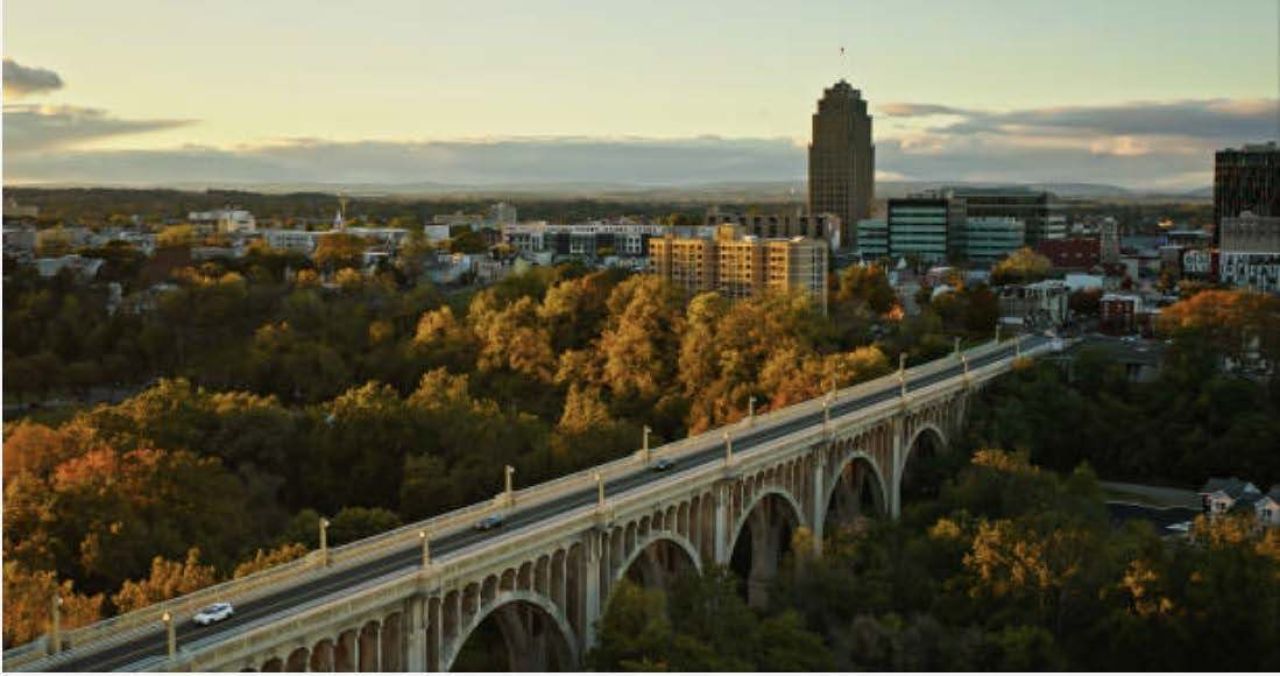
May 23, 2025
Participants in the inaugural cohort of the Civic SciTech Traineeship shared findings from their project with the City of Allentown, Pennsylvania. The Civic SciTech Traineeship was created by the Commonwealth of Pennsylvania Science and Technology Policy Program (COPA-STEP), which is run by LPE and “aims to improve public and environmental health, economic and social equity, and public scientific discourse in the Commonwealth of Pennsylvania.”
Building Climate Resilience Through Urban Greening and Public Engagement in Allentown
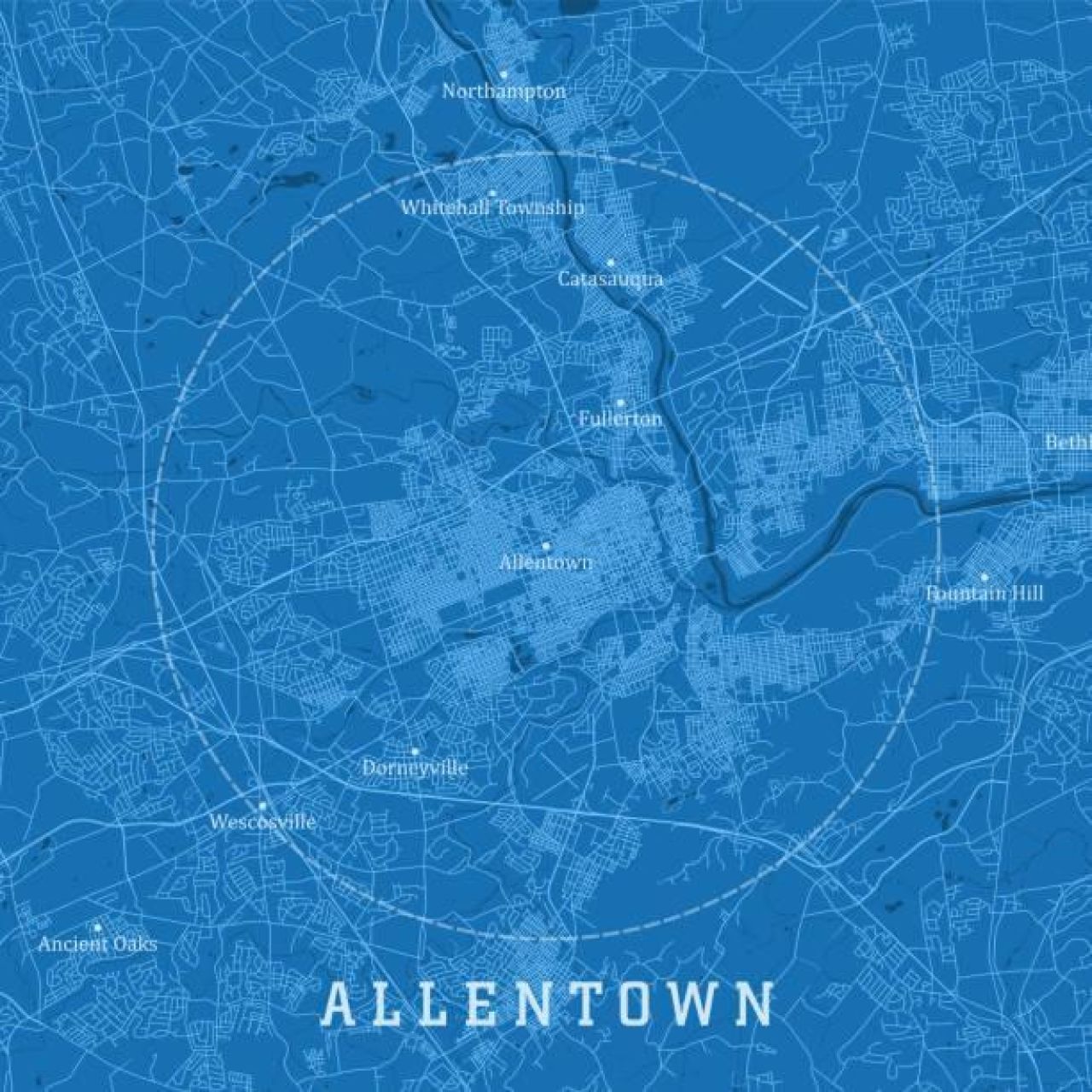
Executive Summary
Allentown, PA, is vulnerable to heat waves and is looking to implement a targeted heat adaptation plan. While regional heat data exists, there is a lack of granular data in Allentown, especially within traditionally underserved areas of the City. This project identifies strategies for advancing climate resilience in Allentown, Pennsylvania, focusing on community-driven solutions, including citizen science, urban greening, and equitable public engagement.
Key Findings
-
Citizen Science and Urban Greening
Cities like Providence, RI, Memphis, TN, and Durham NC as well as counties such as Erie County, NY have successfully used citizen science to strengthen climate resilience, and center community engagement.
-
Language Barriers and Civic Access
Spanish-speaking residents in Allentown face significant barriers to participating in environmental planning due to a lack of Spanish-language outreach and engagement opportunities.
-
Community Engagement Gaps
While some officials expressed concerns about community apathy, organizers emphasized that environmental topics must be framed around residents’ lived experiences to foster meaningful participation.
-
Social Connectivity Drives Success
Listening sessions revealed that strong neighbor-to-neighbor connections support successful tree-planting and greening efforts. However, outreach has so far missed key vulnerable areas like the east side and river wards.
Recommendations
-
Expand Spanish-language access
Hire Spanish-speaking representatives and translate key city materials to improve civic participation and environmental engagement.
-
Launch a Citizen Science Pilot
Deploy 10–15 low-cost sensors to map hyperlocal heat and air quality conditions in partnership with community members and local institutions. These data will support the effort to establish an urban tree equity program.
-
Establish an Urban Tree Canopy Equity Program
Conduct a citywide canopy assessment, prioritize planting in heat islands, and create a free tree adoption program rooted in community leadership.
Project Scope
This project was developed in partnership with and in recognition of the City of Allentown’s ongoing efforts to build climate resilience and promote environmental equity. As the city begins implementing initiatives supported by a $920,800 grant from American Forests and the USDA Forest Service Urban and Community Forestry Program, our work aimed to complement these efforts by identifying data gaps, elevating community voices, and recommending approaches rooted in public engagement and urban greening. We used a mixed-methods approach—conducting stakeholder interviews and reviewing best practices from other cities—to help inform the design of Allentown’s future tree canopy and citizen science strategies.
Limitations
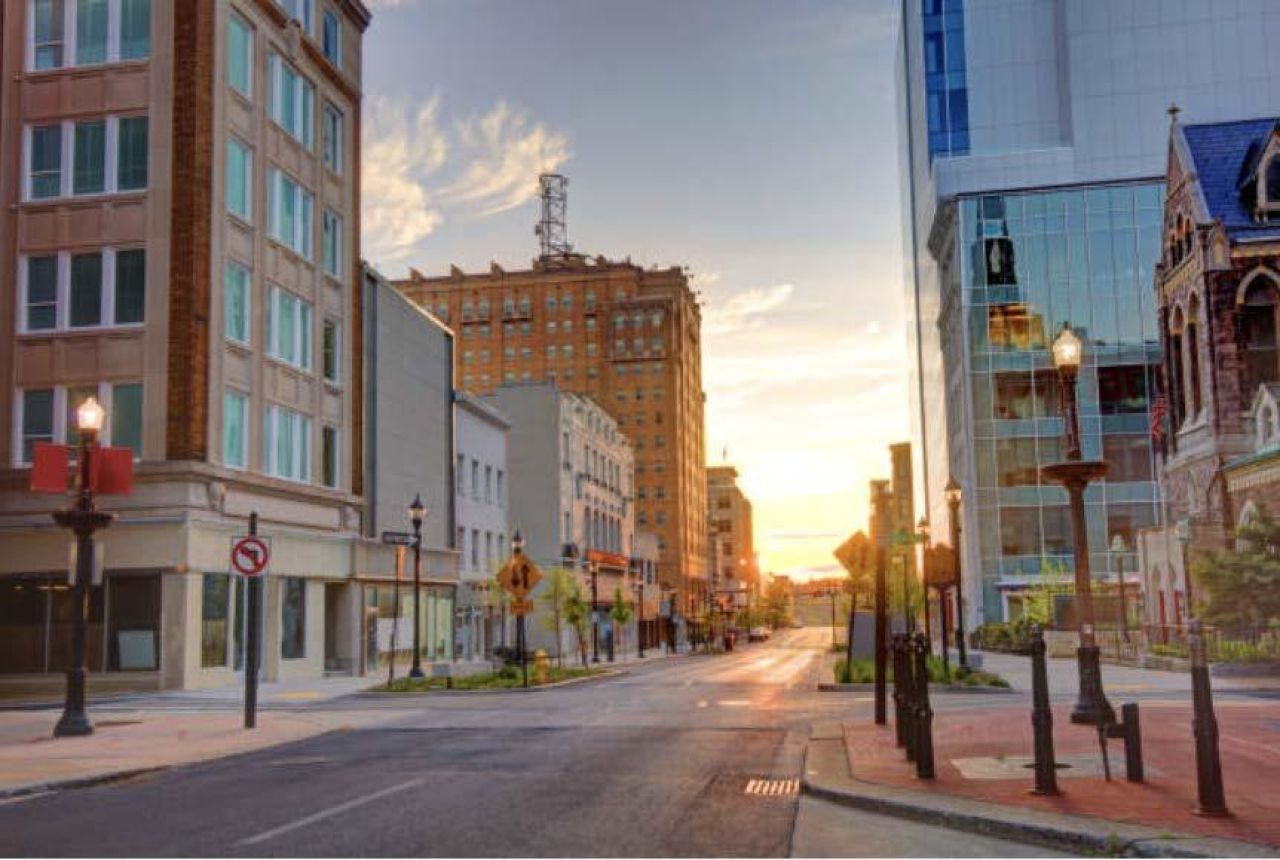
While this report offers targeted recommendations based on robust qualitative insights, its scope was shaped by both the nature of the grant and our time-limited engagement. Our primary focus was on urban greening as a climate adaptation strategy, rather than on broader mitigation efforts. Additionally, we were unable to interview all key stakeholders, including people representing neighborhoods that are not highlighted on Map 1. As a result, while our findings highlight community priorities and systemic challenges, they should be considered alongside continued outreach and long-term monitoring as Allentown’s Climate Action Plan evolves.
Landscape Analysis
Across the United States, cities increasingly turn to citizen science initiatives as a critical tool in their climate resilience strategies. These programs fill data gaps in environmental monitoring, foster community engagement, and build trust in public policy. This landscape analysis draws on examples from diverse urban areas—including Brownsville, Reading, Erie County, Providence, Paterson, Elizabeth, and others—to provide insights into effective practices that may inform similar initiatives in Allentown, Pennsylvania.
Urban Greening and Tree Equity
Many cities vulnerable to extreme heat, flooding, and air pollution have turned to urban forestry as a cornerstone of their resilience strategies. In Providence, RI, the PVD Tree Plan aims to create a more equitable urban forest by planting trees in historically underserved neighborhoods with the lowest canopy cover and highest heat exposure. The initiative is rooted in the city’s broader Climate Justice Plan and relies on extensive community input, with tree selection and planting led by residents and nonprofits1.
Erie County, NY received a $5.2 million USDA Forest Service Urban and Community Forestry Grant—funded through the Inflation Reduction Act—to support the development of a tree nursery, a forest management plan, and workforce development for incarcerated individuals2. Notably, Allentown has also been awarded funding through this same federal program, offering an opportunity to draw inspiration from Erie County’s approach. As Allentown develops its urban greening initiatives, Erie County’s integration of workforce development, long-term management planning, and community-based stewardship models could serve as a valuable blueprint. While this federal funding provides significant capacity for local action, it is important to note that such funding opportunities may not be sustained long-term, and cities must consider scalable, locally supported alternatives, such as private philanthropy.
Salinas, CA, created an Urban Forest Management Plan that offers residents free trees through its Adopt-a-Tree Program, where trained volunteers and community members handle planting, aftercare and education3. At the same time, Elizabeth, NJ—via Groundwork Elizabeth—supports urban agriculture and greening through grassroots programming4.
Community-Led Environmental Monitoring
Citizen science has emerged as a powerful method for collecting environmental data, notably where traditional infrastructure or monitoring networks are lacking. In Memphis, TN, the CitySpace Project deployed 20 sensor pods to gather minute-by-minute air quality and meteorological data, funded by the EPA and informed by community input5.
In Durham, NC, the Village Green Project incorporates air quality sensors into solar-powered public park benches, which transmit real-time data to a public web portal6. The Village Green Project is funded by the EPA Regional Applied Research Effort (RARE) Program, and has expanded to cities such as Washington DC, Philadelphia, and Hartford6. In Los Angeles, CA, a NASA-funded GIS platform was developed through UC Irvine to visualize heat and pollution exposure, complemented by an academy that trains community members to use the tool in advocacy7.
Heat Vulnerability Mapping
The Southeast Florida Regional Citizen Science Climate Action Network (CSCAN) mobilizes over 1,000 residents across 34 municipalities to collect real-time data on flooding and heat8. This grassroots initiative, supported by partnerships with Florida International University, the University of Miami, and Miami Dade College, empowers citizens to use scientific tools and smartphone technology to gather and transmit environmental data. The collected information informs local climate adaptation policies, addressing challenges such as inadequate infrastructure and public health risks. CSCAN places a strong emphasis on equity, actively engaging with Black and Haitian communities in neighborhoods like Little Haiti and Liberty City, which are particularly vulnerable to climate gentrification and displacement. By prioritizing these communities, CSCAN ensures that climate resilience efforts are inclusive and address the needs of those most affected by environmental changes.
In 2021, Miami-Dade County received a challenge grant from the Adrienne Arsht-Rockefeller Foundation Resilience Center to jumpstart an extreme heat initiative under the Resilient305 program. This funding led to the establishment of the CHO position within the county’s Office of Resilience. As a senior leadership role, the CHO works across county departments and with local communities to coordinate strategies that reduce the risks and impacts of extreme heat, particularly in vulnerable neighborhoods. Portland, OR supports depaving efforts in heat-vulnerable neighborhoods using data visualization tools developed in partnership with NASA9.
For Allentown, these examples highlight the importance of filling data gaps and using community-driven data to prioritize resilience actions, such as reducing impervious surfaces and mitigating urban heat islands, especially in underserved neighborhoods where heat impacts are often most severe. Several of these projects have been supported by federal funding and agency partnerships, but with shifting priorities at the national level, such funding may become less reliable. To ensure continuity and impact, Allentown may need to explore alternative funding sources—such as private philanthropy, foundation grants, and university partnerships—just as CSCAN and other initiatives have successfully done.
Public Engagement and Equity as Central Themes
In Reading, PA, composting mini-grants encourage community-led food justice and waste reduction10, while Paterson, NJ’s Green Resource Fairs offer environmental resources and volunteer opportunities to the public11. In Brownsville, TX, the EPA’s Greening America’s Communities initiative supported site-specific stormwater design with broad community input12.
In addition to these examples from across the country, Allentown is taking essential steps to center public engagement in its climate resilience efforts. The City of Allentown recently launched a citywide Sustainability Survey13 to gather input from residents, workers, and students on sustainable practices and climate priorities14. The results of this survey will directly inform the city’s first-ever Climate Action Plan, ensuring that community needs and voices shape long-term environmental strategies. This effort reflects a growing national recognition that building climate resilience must be collaborative, rooted in public trust, transparency, and equity.
Stakeholder Analysis
Language Barriers
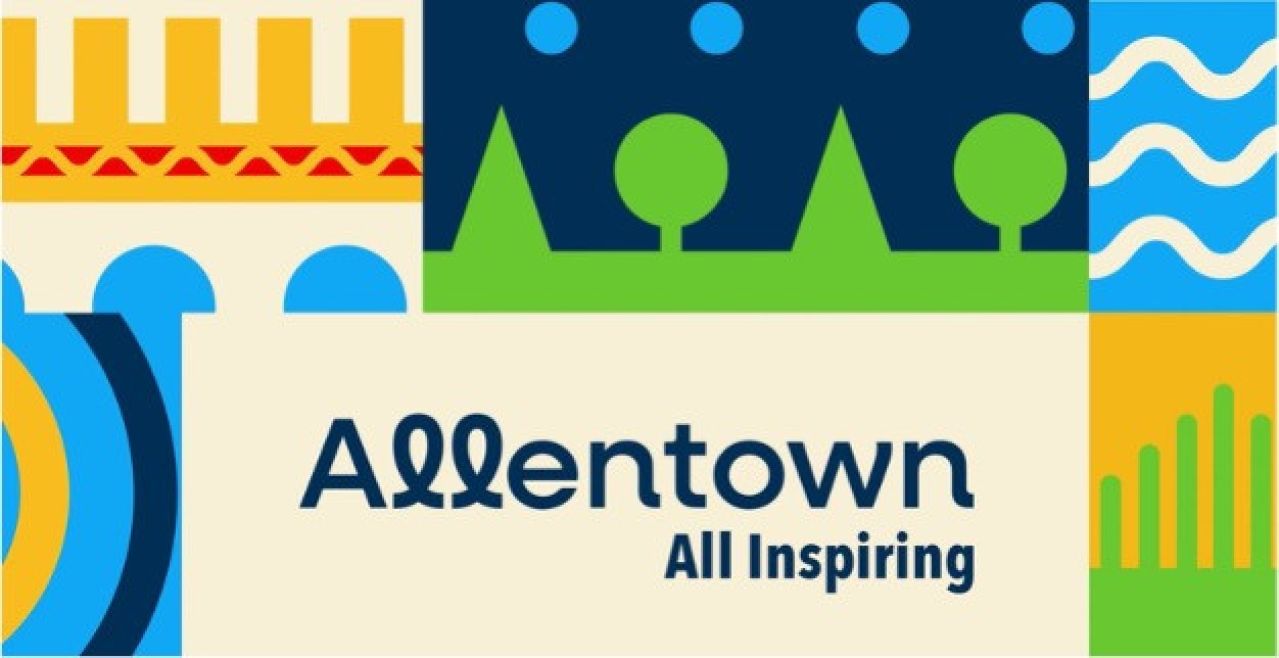
Allentown’s predominantly Latino population raised community concerns about the lack of language access to city policies and engagement. Ongoing engagement opportunities, including outreach materials, are frequently written in English, which impacts engagement with the
non-English speaking populations of Allentown. There was a previous summer fellow project15 that identified documents for translations; however, progress is limited. Public meetings are often held in English, continuing the exclusion of many people, including non-English speakers16.
When moving to address environmental justice concerns, the city needs to prioritize multilingual representation17.
Community Engagement
Community members are invested in community engagement opportunities but need the necessary outlets, communication, and transparency. Some government-affiliated representatives cited concerns of community apathy; however, community organizers challenged this apathy sentiment. While these environmental topics might not be “dinner table” topics, people are concerned about climate heat-related topics such as concerns of cooling and access to air conditioning. So, community engagement around environmental concerns must address the lived experiences of residents who have historically not been involved in these conversations and environmental efforts. Allentown residents can actively participate in heat adaptation strategies within their communities and neighborhoods when the city prioritizes community engagement.
Community-City Collaboration through Citizen Science
Community-city collaborations18 can effectively address collective environmental goals. By collaborating with city officials, community members can voice their concerns about adaptation strategies that conflict with their living situation. This includes the long-term financial concerns of implementing and maintaining climate solutions. Thus, the collaboration can address how the city elevates and resolves community concerns about existing climate mitigation barriers that continue to exclude historically marginalized communities. Additionally, by utilizing a citizen science tool, community members maintain civic agency when advocating for climate solutions19 in their communities and neighborhoods. Citizen science20 increases the depth and breadth of data collection, community capacity-building, and scientific awareness and knowledge. The robust data collection increases success in accepted grant funding applications and better
designed adaptation strategies. Therefore, community-city collaboration through citizen science supports community voices and agency while also supporting long-term improvement of environmental conditions in Allentown.
Allentown Mapping
Tree Planting Priority Locations and Heat Severity
Allentown residents value trees as both a climate tool and a social catalyst, yet who can influence planting decisions—and where—still hinges on communication access. Interviewees repeatedly flagged language barriers: public-meeting notices, outreach flyers, even council agendas appear almost exclusively in English, despite the city’s majority Latino, Spanish-speaking population.
To prioritize community engagement, language access and the timing of meetings must be considered when discussing potential areas for future tree planting.
Where engagement does happen with the various community organisers, the conversation quickly shifts from apathy to practicality. Organizers who work door-to-door stressed that environmental issues “aren’t dinner-table topics until the electric bill arrives.” Residents will volunteer to water saplings or track summer temperature spikes, they said, if the effort connects to lived experience—shade on the playground, lower cooling costs, safer walks to the bus. That insight aligns with our community map: most interview clusters sit in central and west-side neighborhoods where long-standing civic groups already translate environmental jargon into day-to-day concerns.
Overlaying those clusters on a land-surface-temperature heat map (Map 2) reveals the blind spot. The city’s hottest surfaces—east-side corridors, river-adjacent tracts, and pockets of South Allentown—fall largely outside the interview footprint. These same tracts register the fewest street-tree permits and the highest renter density, magnifying both heat exposure and maintenance worries (sidewalk heave, leaf pickup, landlord sign-offs).
The second map overlays the Trust for Public Land’s 2023 Heat‑Severity raster with the City’s draft planting zones. Warm colors identify census blocks that register hottest spots in Allentown’s summertime mean; green tree symbols mark the 800 street and park trees funded for planting through 202721. The composite view verifies that many high‑heat blocks already sit inside Phase‑1 target areas, yet it also exposes several unserved corridors—most notably along the east side, the Lehigh River flats, and pockets of South Allentown—where extreme surface temperatures persist without any scheduled canopy expansion.
The first map(Map 1) community‑engagement map plots every organization and neighborhood hub consulted during listening sessions: youth clubs, social‑service centers, school‑district offices, and municipal buildings. These pins trace the social networks ready to steward new plantings and host citizen‑science sensors, but they cluster heavily in Center City and the west end. When the two maps are viewed together, a critical equity gap emerges—the hottest blocks on the heat map correspond to the sparsest collection of engagement pins. This misalignment underscores the need for bilingual outreach and a city‑wide citizen‑science program to bring east‑side, river‑ward, and south‑side residents into the next rounds of planning and long‑term tree care.
This report has not covered all the community of allentown - potential engaged, moving forward allentown needs to broader engagement -
Next steps:
Publish all tree-planting materials—and meeting streams—in Spanish and English.
Launch a bilingual citizen-science project focused on East Allentown, the Lehigh River corridor, and South-side blocks with the highest surface-temperature readings.
Use the resulting resident-generated data to prioritize planting funds, refine maintenance of existing trees budgets, and measure cooling benefits across the full breadth of Allentown.
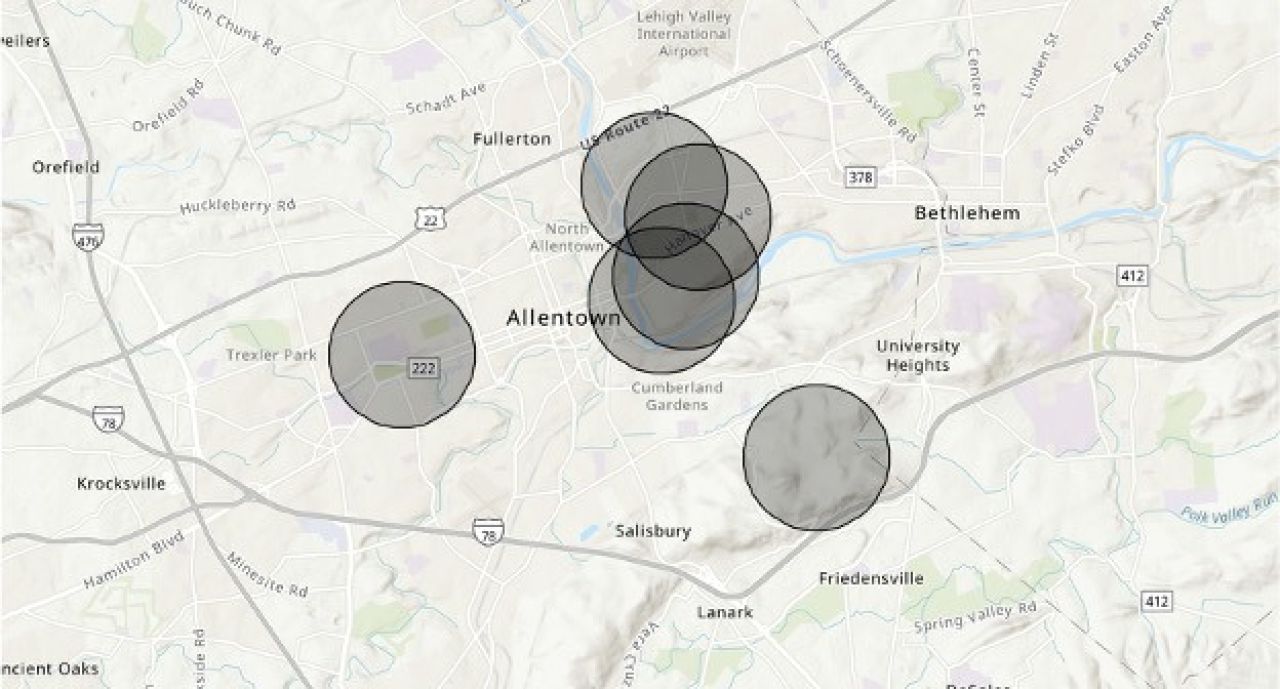
Map 1 : Community Engagement Map with City of Allentown
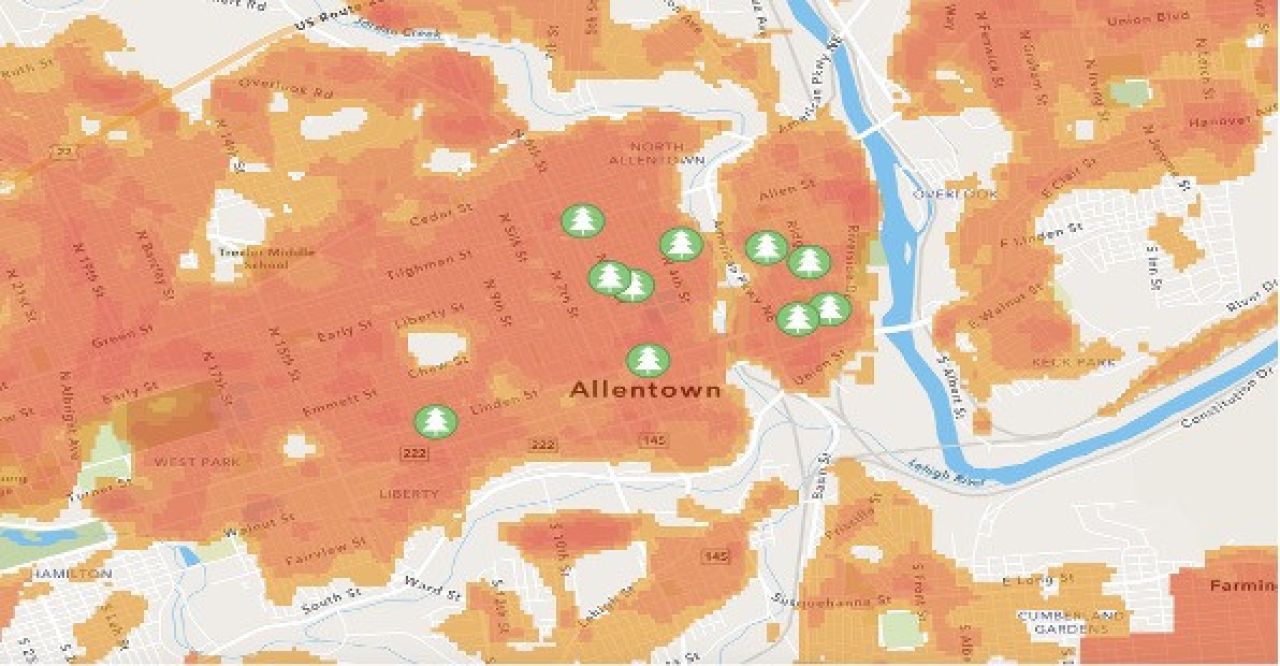
Map 2: Tree planting priority areas relate to heat severity in Allentown, PA
Recommendations
Address language access in Allentown by prioritizing non-English-speaking representation for civic engagement opportunities.
Increase multilingual translations across city documents and outreach materials
- Why: Democracy Rising22 suggests developing materials that make sense to different language communities and their cultural contexts to create spaces where people can show up and participate fully in their language.
- How: Prioritize active community presence in civic engagement processes, such as policymaking, through hiring Allentown residents that embody the identities and values of Allentown’s multilingual community.
Utilize Citizen Science to address urban heat island effect through community-city collaborations.
Launch a Heat and Air Quality Mapping Pilot Using Low-Cost Sensors
- Why: Many peer cities like Memphis and Durham have successfully deployed low-cost, community-informed sensor networks to track hyperlocal air quality and temperature, which directly impact public health and equity.
- How: Begin with 10–15 sensor pods located based on community input, particularly in underserved neighborhoods. Host community trainings for calibrations and data interpretations. Use the data to support grant applications or infrastructure planning.
Create equity-oriented programming to implement climate adaptation strategies.
Establish an Urban Tree Canopy Equity Program
- Why: Providence and Erie County demonstrate that strategic tree planting improves resilience and equity. Tree canopy loss disproportionately affects low-income neighborhoods, exacerbating heat vulnerability and stormwater runoff.
- How: Conduct a canopy assessment, then launch a free tree adoption program. Prioritize areas identified as heat islands. Involve community members in planning and stewardship to build local ownership.
